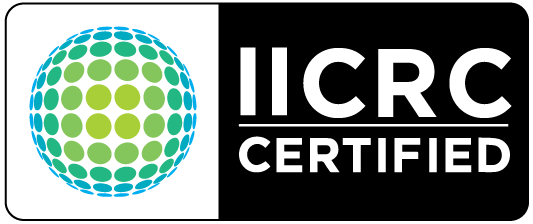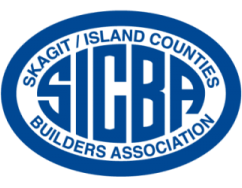Water Damage Restoration FAQs
Here are answers to some common questions about Water Damage Restoration
Water Damage Restoration FAQs
Here are answers to some common questions about Water Damage Restoration
-
What Should I Immediately Do After Water Damage?
The very first step when you discover water damage is to identify where the water is coming from. This could be a burst pipe, a leaking appliance, a damaged roof, or even flooding from outside. Once you locate the source, shut it off immediately if possible. For example, turn off the main water supply valve in your home, unplug or disconnect faulty appliances, or temporarily block exterior water entry points. Stopping the flow of water quickly is the most important step to prevent further damage from spreading.
After the source has been controlled, the next step is to remove as much standing water as you can. Use towels, mops, or absorbent cloths to soak up water from the floors and affected surfaces. For larger amounts of water, a wet/dry vacuum can be very effective. The faster you can remove the water, the less chance it has to seep into flooring, walls, and furniture, which helps reduce long-term damage like warping, mold growth, and structural weakening.
Once you’ve done what you can to stop the water and clean up the excess, it’s critical to call a professional water damage restoration service. Professionals have the right equipment and expertise to thoroughly dry, sanitize, and restore affected areas. They can also assess hidden damage behind walls, under floors, or inside ductwork that you may not notice right away. Acting quickly and bringing in experts not only protects your home from further damage but also ensures a healthier living environment by preventing mold and mildew growth.
-
Does Water Damage Cause Mold?
Water damage absolutely has the potential to lead to mold growth—but it doesn’t always have to. Mold thrives in damp, untreated environments, and the longer water sits, the greater the risk becomes. The good news is that if you respond quickly to the emergency, you can often prevent mold from developing. Acting fast to stop the source of the water, begin cleanup, and most importantly, contacting a professional water damage restoration company like CG right away can make all the difference. With the proper equipment and expertise, they can thoroughly dry and treat the affected areas before mold has a chance to take hold, helping you avoid bigger, more costly problems down the road.
-
Is Water Damage Repairable?
Water damage is absolutely repairable! No matter how overwhelming it may look at first, there are proven methods to restore your property and belongings. Whether it’s a small leak contained to a single room or a severe flood that has affected the entire home from top to bottom, water damage can be addressed.
The key is taking the right steps: stopping the source of the water, removing excess moisture, drying the space thoroughly, and repairing or replacing damaged materials. In minor cases, this might mean replacing drywall or flooring in a small area. In larger cases, it can involve full-scale restoration efforts to bring a house back to pre-damage condition.
Professional water damage restoration companies specialize in these situations and have the expertise, equipment, and techniques to repair even extensive damage. With quick action and the right help, your home can be made safe, sound, and comfortable again.
-
Why Is Water Damage So Expensive?
Water damage restoration can become costly, and the reason is simple—water causes extensive damage in a very short period of time. Once moisture seeps into a home, it doesn’t just stay on the surface. It penetrates into multiple layers of materials, many of which must be replaced to ensure the structure is sound and free of mold. Drywall, plywood, insulation, flooring, and even tile can all be compromised, and the cost of replacing these materials adds up quickly.
In addition to the materials, you’re also paying for the expertise of highly trained professionals. Water damage restoration specialists use advanced techniques and specialized equipment—such as industrial-grade dehumidifiers, air movers, and moisture detection tools—that are not available to the average homeowner. This equipment is expensive, but it is critical to ensuring that every trace of water is removed and that your home is thoroughly dried, sanitized, and restored.
When you consider both the complexity of the job and the importance of doing it correctly, the cost reflects the skill, labor, and technology required to protect your home and prevent even bigger problems in the future.
-
Can a One-Time Water Leak Cause Mold?
Unfortunately, yes—a water leak of any size or duration has the potential to lead to mold growth. Mold thrives in damp environments, and even a small amount of lingering moisture can create the right conditions for it to develop.
If you’ve experienced a small leak and believe it has dried up completely, it’s still important to stay vigilant. We highly recommend monitoring the affected area daily for the next few weeks. Watch for any signs of mold growth, such as discoloration, a musty odor, or changes in the texture of walls, ceilings, or flooring. Catching mold early makes it much easier to address before it spreads and becomes a larger, more costly problem.
-
How Do You Dry Out Walls After A Water Leak?
Water damage inside walls is one of the most difficult issues for a homeowner to tackle alone. Unlike surface water damage, moisture hidden behind drywall or inside wall cavities is almost impossible for a layperson to properly reach, dry, or repair. Left untreated, this trapped moisture can weaken the structure, lead to unpleasant odors, and create the perfect environment for mold growth.
That’s why it’s essential to hire a professional water damage restoration company when walls are affected. These specialists use advanced, specially designed equipment—such as industrial-grade dehumidifiers, air movers, and moisture meters—to thoroughly dry out walls without tearing everything apart unnecessarily. In cases where drying isn’t enough, they also have the expertise and training to safely remove and replace damaged sections while ensuring the structural integrity of your home remains intact.
By relying on professionals, you gain peace of mind knowing the problem has been properly handled and won’t return later as a hidden hazard.
-
How Quickly Can Water Damage Spread?
Water can begin seeping into walls, floors, and furniture within minutes, and within 24–48 hours, it can cause significant structural and mold issues if left untreated.
-
Does Insurance Cover Water Damage Restoration?
Many homeowner’s insurance policies cover water damage caused by sudden and accidental events, but exclusions often apply for flooding or gradual leaks. It’s best to review your policy and consult with your provider.
-
What Items Can Be Saved After Water Damage?
Hard surfaces like wood, tile, and metal can often be restored if treated quickly, while porous materials such as drywall, carpet, and insulation may need replacement depending on the level of saturation.
-
Why Should I Hire Professionals Instead of Handling Water Damage Myself?
Professionals have specialized equipment to extract water, dry affected areas thoroughly, and prevent mold growth, which is difficult to achieve with household fans and shop vacuums.
-
How Long Does Water Damage Restoration Take?
The timeline depends on the extent of the damage, but most restoration projects take anywhere from 3 to 7 days for drying, followed by additional time for repairs if needed.


